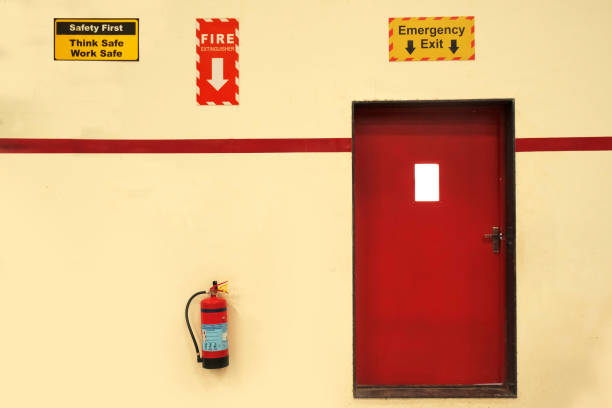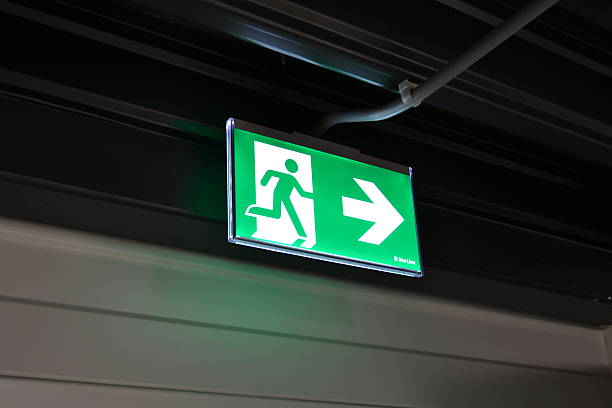A Step-by-Step Guide to Completing Lighting Certificate
Businesses and homes all need light, but just putting in some light bulbs doesn’t work in all cases. In certain situations, you must complete lighting certificates to show that you maintain the standards set by certain bodies. But how do you comply with these standards and get this certificate? In this article, we will show you the process step by step. We will also help you by informing you about the common mistakes people make and the benefits you can enjoy by completing the process properly.
What Are Lighting Certificates?
Lighting certificates are official landlord certification documents that verify a business’s adherence to specific lighting standards. These certificates come in various types, each serving a unique purpose. They encompass energy efficiency, safety, and compliance with environmental regulations.
Why Do You Need a Lighting Certificates ?

Compliance with regulations is a primary reason to pursue lighting certificates. Governments and environmental agencies set standards to control energy consumption and promote sustainability. Obtaining these certificates keeps your business on the right side of the law. It contributes to cost savings through energy-efficient practices.
Step-by-Step Guide to Obtaining Lighting Certificates
Completing lighting certificates can vary depending on the specific type of certificate you need and the regulations in your region. Below is a general step-by-step guide that can help you complete lighting certificates. Remember that this is a broad overview, and you should always check with local authorities and relevant organizations for specific requirements.
Step 1: Identify the Type of Lighting Certificate Needed
Determine the specific type of lighting certificate you require. Common types include:
Energy Efficiency Certificates: These may be required to demonstrate compliance with energy efficiency standards.
Safety Certificates: Ensuring that lighting fixtures meet safety standards.
Environmental Certificates: If your lighting system incorporates environmentally friendly features.
Step 2: Research Local Regulations and Standards
Different regions and countries have varying regulations and standards for lighting. Research the local laws and regulations governing the type of certificate you seek. This information is often available through government websites or relevant industry associations.
Step 3: Compliance Assessment
Evaluate your lighting system to ensure it complies with the required standards. This may involve assessing factors such as energy efficiency, safety features, and environmental impact.
Step 4: Documentation
Prepare all the necessary documentation to support your application for a lighting certificate. This may include:
Product specifications: Detailed information about the lighting fixtures.
Test reports: If your lighting products have undergone testing to verify compliance.
Energy performance data: Especially relevant for energy efficiency certificates.
Step 5: Hire a Certification Body
Engage with a recognized certification body authorized to issue the certificate you need. Ensure that the certification body is accredited and has the necessary expertise in lighting standards.
Step 6: Submit Application
Submit your application for the lighting certificate to the certification body. Include all required documentation and pay any applicable fees.
Step 7: Inspection and Testing
Depending on the type of certificate, your lighting system may undergo inspection and testing by the certification body. This step is crucial to verify that your products meet the specified standards.
Step 8: Certification Issuance
If your lighting system passes the inspection and testing, the certification body will issue the relevant certificate. This document confirms that your lighting products comply with the specified standards.
Step 9: Compliance Maintenance
Regularly review and update your lighting system to ensure ongoing compliance with standards. Some certificates may expire, and maintaining compliance is essential for long-term certification validity.
Step 10: Display and Promote
Once certified, you can display the certification on your products or marketing materials. Certification can improve your credibility and competitiveness in the market.
Always consult with local authorities and certification bodies for the most accurate and up-to-date information specific to your location and type of lighting certificate.
Common Mistakes to Avoid
Ignoring Local Regulations
Mistake: Failing to research and understand the specific lighting regulations and standards in your local area.
Why it’s a mistake: Different regions have varying requirements, and neglecting to comply with local regulations can result in legal issues and product rejection.
Incomplete Documentation
Mistake: Submitting an application for a lighting certificate without providing comprehensive and accurate documentation.
Why it’s a mistake: Incomplete or inaccurate documentation can lead to delays in the certification process or even rejection, wasting time and resources.
Choosing an Unaccredited Certification Body
Mistake: Selecting a certification body that is not accredited or lacks expertise in the relevant lighting standards.
Why it’s a mistake: Certificates issued by non-accredited bodies may not be recognized or accepted, undermining the credibility of your products and potentially causing legal complications.
Benefits of Having Lighting Certificate

Market Credibility
Lighting certificates enhance the credibility of your products, demonstrating that they meet recognized industry standards.
Legal Compliance
Certification ensures that your lighting products comply with local regulations, reducing the risk of legal issues and penalties.
Energy Efficiency Recognition
Certificates for energy-efficient lighting highlight your commitment to sustainability, appealing to environmentally conscious consumers and businesses.
Access to Markets
Some markets or clients may require certified products. Having lighting certificates opens doors to these opportunities and expands your market reach.
Product Differentiation
Certification sets your lighting products apart from non-certified competitors, giving consumers confidence in your offerings’ quality, safety, and performance.
Conclusion
Completing lighting certificates is a very important step that businesses must prioritize for sustainability, energy efficiency, and compliance. With our guide, you will find the process much easier to complete and know about the common mistakes without any pitfalls. There are many benefits to completing these certificates, so you shouldn’t wait.
FAQs
Is it mandatory for businesses to obtain lighting certificates?
While not always mandatory, completing lighting certificates is highly recommended for businesses looking to demonstrate their commitment to sustainability and energy efficiency.
What is the cost of hiring a lighting consultant?
The cost varies based on the scope of the project and the consultant’s experience. It’s an investment that pays off in the long run through energy savings and certification benefits.
Can small businesses benefit from lighting certificates ?
Absolutely. Small businesses can enhance their credibility and potentially reduce operational costs through energy-efficient lighting solutions.
Are there ongoing maintenance requirements after obtaining a lighting certificates?
Regular maintenance is advisable to ensure continued compliance and optimal energy efficiency. Periodic audits can help identify areas for improvement.
How do lighting certificates contribute to a company’s reputation?
Lighting certificates demonstrate a commitment to environmental responsibility, contributing positively to a company’s reputation and attracting environmentally conscious clients.

